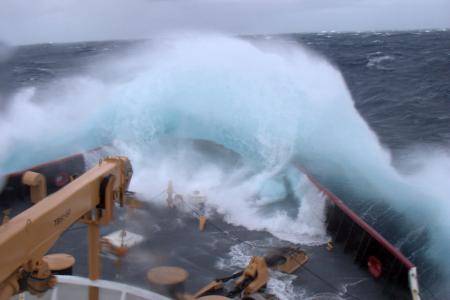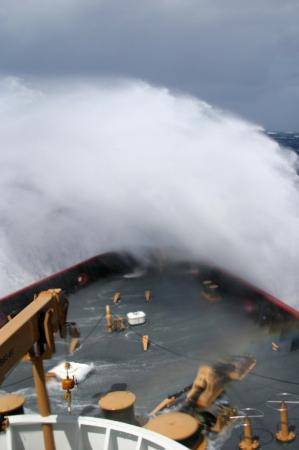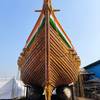Russian, Chinese Vessels Freed from Arctic Ice
The U.S. Coast Guard Cutter Polar Star was released by the Australian Maritime Safety Authority from search and rescue duties Jan. 7, following confirmation the Russian-Flagged Akademik Shokalskiy and Chinese-Flagged Xue Long are free from the Antarctic ice due to a favorable change in wind conditions.
The Coast Guard Pacific Area command center received confirmation from the Australian Maritime Safety Authority at 2 p.m. Pacific Standard Time that both ships broke through the heavy ice, rendering assistance from the Polar Star no longer necessary.
“We are extremely pleased to learn that both the Xue Long and the Akademik Shokalskiy freed themselves from the ice. This case underscores the dynamic and harsh operating environment and the necessity for Polar Class Icebreakers in the Antarctic. I am indebted to the tremendous collaboration with RCC Australia, other countries that assisted and the National Scientific Foundation throughout this operation,” said Vice Adm. Paul F. Zukunft, Coast Guard Pacific Area commander.” And I am especially proud of the crew of the Polar Star who have toiled these past several years in restoring this great cutter to Semper Paratus – Always Ready status, as she alters course for McMurdo and Operation Deep Freeze.”
“I am exceptionally proud of my crew in their ability to respond to this mission,” said Capt. George Pellissier, commanding officer of the Polar Star. “I, too, am extremely pleased that both the Akademik Shokalskiy and the Xue Long have been able to work their way free of the ice. We’re now looking forward to continuing on our primary mission of resupplying McMurdo Station.”
The Polar Star received the original request from the Australian Maritime Safety Authority on Jan. 3 to assist the Russian-Flagged Akademik Shokalskiy and Chinese-Flagged Xue Long, reportedly ice-bound in the Antarctic. The Russian and Chinese governments also requested assistance from the United States. After resupplying in Sydney, the cutter was en route to the stranded vessels Jan. 4.
The Polar Star left its homeport of Seattle in December 2013 on one of its primary missions Operation Deep Freeze. The ship’s mission is to break a channel through the sea ice of McMurdo Sound to allow the resupply and refueling of the U.S. Antarctic Program’s McMurdo and Amundsen-Scott South Pole stations.
The National Science Foundation manages all the scientific research and logistics of the U. S. Antarctic Program on the Antarctic continent and in the Southern Ocean. McMurdo Station is the logistics hub for the U.S. Antarctic Program research.
This is the first time since 2006 that the Polar Star has made this journey. It has recently completed a three-year, $90 million overhaul, which will allow it to continue these important missions into the foreseeable future. For more than 50 years, Coast Guard icebreaker crews have deployed to Antarctica in support of Operation Deep Freeze.
The Polar Star is the U.S. Coast Guard’s only active heavy polar icebreaker. The ship is 399 feet in length and its maximum speed is 18 knots. The cutter is able to continuously break six feet of ice at three knots, and break 21 feet of ice backing and ramming. The Polar Star is specifically designed for open-water ice breaking with a reinforced hull and special ice-breaking bow.
uscgnews.com










